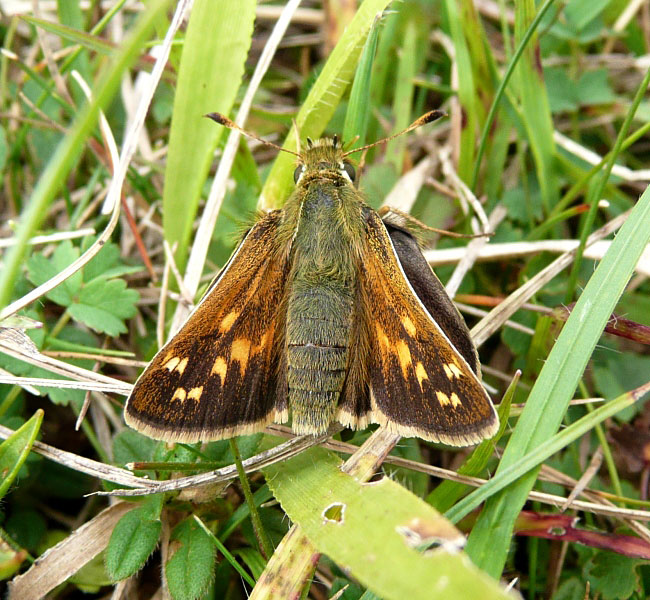With a forecast window of dry and sunny weather, the opportunity was taken to embark on what will probably be my last bit of serious butterflying for the year, with 3 new species the target.
Contrary to the forecast of 24 degrees and sunshine, on arrival Aston Rowant was shrouded in low cloud with occasional drizzle, and was cool with a fair breeze, nevertheless within only a matter of seconds of walking out onto the hillside I found my first target a Silver-spotted Skipper.
In reality the poor weather was probably an advantage in some ways with the Skippers being pretty inactive until disturbed and thus allowed close approach making photography much easier than if they were buzzing around the hillside had the weather actually been hot and sunny.
As usual I took loads of photos, some of which are included below.
As is commonplace in this part of the country, Red Kites were an ever present feature in the sky, but sadly the weather and light made any really decent photos out of the question especially with my point & shoot camera, although I was still happy with what I managed anyway.
Next stop was Yoesden Bank with Adonis Blue the target. As this is the only butterfly to date that I've failed to find on two previous tries, I was determined to succeed this time, and after a couple of false alarms over Common Blues, I disturbed a strikingly coloured Blue from the grass which I instantly knew was going to be one, and sure enough once it settled the upperwing colouration, with more importantly the black lines through the white outer fringe, were quickly confirmed and I was delighted to have seen one at last.
About 3 or 4 Adonis Blues were found, plus a number of other species including several Chalkhill Blues although the males were mostly faded and tatty, but were nice to see nonetheless.
With the predicted sunny and warm weather now materialising, and thanks to some excellent directions given to me by another butterflyer at Yoesden, I quickly made my way to Whitecross Green Wood in search of Brown Hairstreaks.
Brown Hairstreaks have a reputation of being probably the hardest butterfly to connect with, being so unpredictable in their appearances and rarely descending from the canopy of their chosen ash tree. Looking like I was destined to fail, just as I was about to leave I noticed a movement in top of an ash and decided to persevere here just in case. After a few tantalising glimpses during the next hour I finally saw it land in view and a quick check through the bins revealed a gorgeous orange underwing with white lines - it was a Brown Hairstreak! It once again moved and I was then treated to it doing a bit of basking, opening up its wings to reveal the orange patches on its brown wings.
Naturally I was hoping to find one lower down but in reality I was just pleased to see one for now, and to grab a quick digiscoped image of one as it moved slightly lower down into the top of an adjacent tree.
During my earlier searching I also chanced upon a very faded and worn Silver-washed Fritilary which was an added bonus.
All in all an excellent trip with three new species recorded, and excluding vagrants, leaving just 6 more species to see, although given their distance away from Norfolk I'll target them over the next 2 or 3 years and combine them with a bit more dragonflying too.























